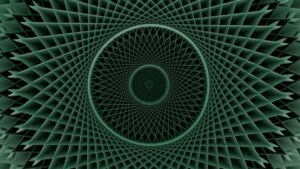Nyāya and Vaiśeṣika are two ancient Indian philosophical systems that provide insights into the nature of reality, knowledge, and existence. Both Nyāya and Vaiśeṣika offer distinct perspectives on various aspects of life and have had a significant influence on Indian thought.
Nyāya, which means “logic” or “reasoning,” focuses on the nature of knowledge and the means of acquiring it. The Nyāya system recognizes four pramānas or valid means of knowledge: perception (pratyakṣa), inference (anumāna), comparison (upamāna), and testimony (śabda). These pramānas are considered reliable sources of knowledge and form the foundation of the Nyāya epistemology.
Perception (pratyakṣa) is the direct sensory experience of the external world. It is through perception that we gather information about the objects and events around us. Inference (anumāna) is the process of arriving at a conclusion based on observation and reasoning. Comparison (upamāna) involves the recognition of similarities between objects or events. Testimony (śabda) refers to the knowledge gained through the words of reliable sources, such as teachers or scriptures.
Nyāya also distinguishes between two types of knowledge: laukika (ordinary) and alaukika (extraordinary). Laukika knowledge is derived from the ordinary means of knowledge, while alaukika knowledge is obtained through extraordinary means, such as yogic powers or divine revelation.
Vaiśeṣika, on the other hand, focuses on the nature of reality and the classification of objects. It divides the world into six categories called padārthas: substance (dravya), quality (guṇa), action (karma), universal (sāmānya), particularity (viśeṣa), and inherence (samavāya). These padārthas provide a comprehensive framework for understanding the different aspects of existence.
Vaiśeṣika also proposes an atomistic theory of creation. According to this theory, the universe is composed of an infinite number of eternal, indivisible particles called atoms (paramāṇus). These atoms combine and recombine to form different substances and objects in the world. The Vaiśeṣika system further classifies these atoms based on their qualities and properties.
In addition to the padārthas and the atomistic theory, Vaiśeṣika also introduces the concepts of upalabdhi (perception) and anupalabdhi (non-perception). Upalabdhi refers to the direct perception of an object through the senses, while anupalabdhi refers to the absence of perception or the non-perception of an object.
Both Nyāya and Vaiśeṣika provide valuable insights into the nature of reality and knowledge. While Nyāya focuses on the means of acquiring knowledge and the different types of knowledge, Vaiśeṣika offers a comprehensive classification of objects and a theory of creation based on atoms. Scholars and philosophers continue to study and debate these philosophical systems, which have significantly influenced the development of Indian philosophy.
In conclusion, Nyāya and Vaiśeṣika are two ancient Indian philosophical systems that explore different aspects of reality, knowledge, and existence. Nyāya emphasizes the means of acquiring knowledge and distinguishes between ordinary and extraordinary knowledge. Vaiśeṣika, on the other hand, focuses on the classification of objects and proposes an atomistic theory of creation. Both systems offer valuable insights into the nature of life and continue to be relevant in contemporary philosophical discussions.


















+ There are no comments
Add yours